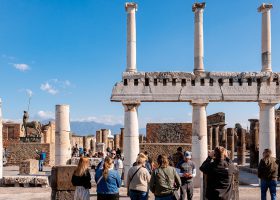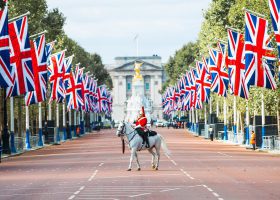Everyone has heard the popular expression “All roads lead to Rome,” but how many roads can you take from the Eternal City to enjoy its surroundings and discover new secrets? In this article, I take you on day trips to discover Rome’s surroundings and nearby archaeological sites. If you have extra time to spend on your trip to Rome, these amazing sites should not be missed!
Coolest Ancient Roman Ruins To Visit Near Rome
There’s plenty to see in Rome—actually, there’s a lifetime of things to see and explore in Rome. But for those looking to see more than a bustling city, I’ve compiled this list of my favourite archaeological sites near Rome that are worth a few hours or a full day trip. From ancient Roman roads and tombs to bathing caves and villas, you’ll find amazing ruins and sites that will intrigue anyone interested in Roman history and culture.
10. The Appian Way and the Catacombs
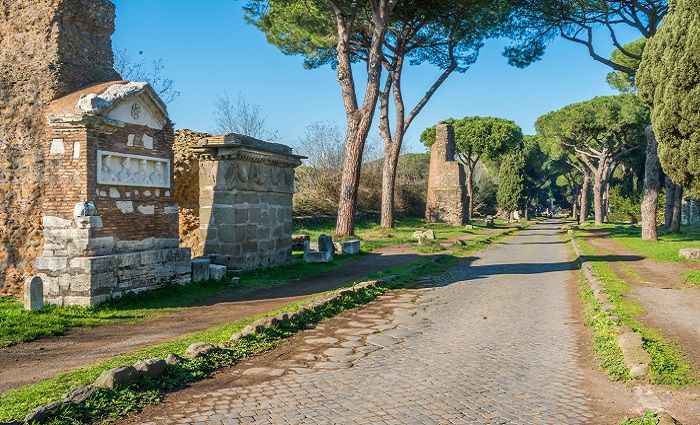
Walking | Biking | Day Trip
The Appian Way (a road named after the magistrate) was built between 312-310 BC to connect Rome and Capua. At first, they constructed the road from gravel, but later paved for easier travel. Exploring this road and its surroundings is a great way to experience an ancient Roman suburb.
Start your route just outside Porta Sebastiano to understand pagan burial practices by visiting temples, tombs, and mausolea built alongside the road. Sound intriguing? Then you’ll really want to go underground and visit the Catacombs of St. Callistus, Praetextatus, Domitilla, S. Sebastiano, or the Jewish Catacombs.
The art of dying in ancient Rome was closely linked to the art of living. So on your route across the Appian Way, you will visit the imperial residences such as the Villa of Maxentius (has a circus inside), or the famous villa of the Quintilli with its superb nymphaea, fountains, gardens, and aqueducts.
To get to the Villa of Maxentius, you have the option to utilize public transportation. However, I recommend hiking or biking to get a real sense of living like the locals, surrounded by ancient ruins.
Looking for a more in-depth adventure around Appian Way? Book an Appian Tour in Rome.
9. Livia’s Villa at Prima Porta
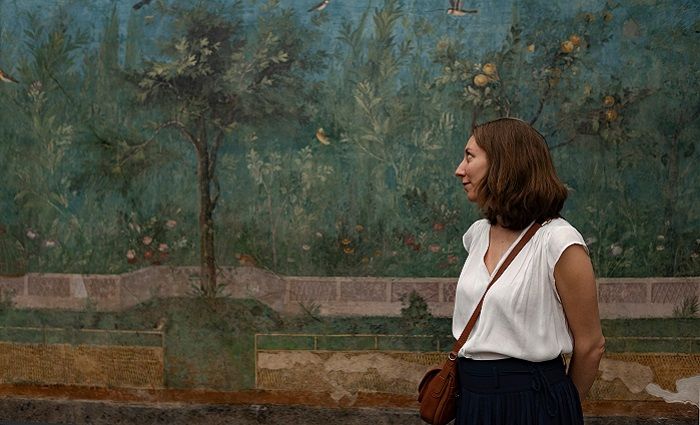
Museo Nazionale | Roman Paintings | Nature
The Villa Ad Gallinas Albas is located approximately 15 kilometers (9.3 miles) north of Rome. Archaeologists believe this is the villa of Livia, the first empress of Rome. According to the writer Pliny the Elder, an eagle dropped a white hen with a laurel branch into Livia’s lap here. The name of this spot, plus the archaeological discoveries found here, have led scholars to identify this villa as Livia’s.
Livia probably inherited this estate from her father, and excavations confirmed the 1st century BC as the early construction period of the structures here. As a suburban residence, colonnaded gardens and sumptuous rooms with views define this villa.
However, the underground rooms are the most attractive feature of this imperial villa. Archaeologist believe they might have been a summer dining room with a luxurious decoration.
First news of this villa’s discovery date back to 1863 when the superbly painted garden scenes (unique in Roman art) amazed excavators and visitors alike. After tumultuous years in which these paintings suffered damages, authorities detached them from the walls between 1951 and 1952. Today, you can see them at Palazzo Massimo all Terme as part of the Roman painting collections.
8. Ostia, the Port of Rome
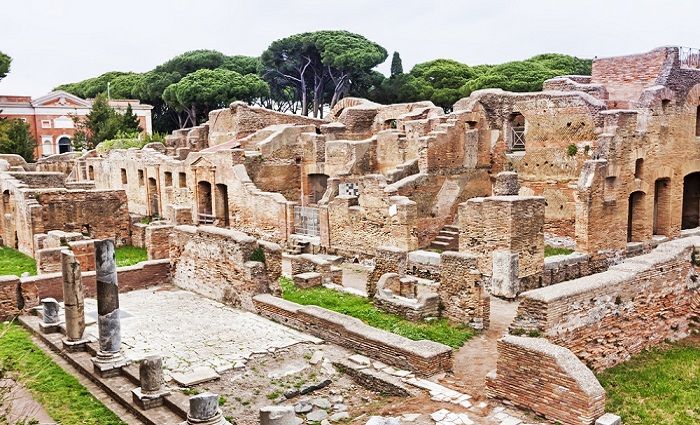
Theatre | Beach | Day Trip
Visiting Ostia is one of the most popular half-day trips from Rome. It is located just 30 kilometers (18.6 miles) from the city center and is well connected by train. This Roman city developed especially from the 4th century BC until late antiquity and mainly served as the seaport of Rome.
Its well-preserved buildings make this city an excellent spot to experience how it was to wander ancient Rome for a day. Be sure to make time to stop by a street bar, visit a block of apartments (insula in Latin), enter a luxury villa, or sit by the massive theatre and imagine theatrical performances. And do not forget to wander some of the many bath complexes they had when enjoying leisure time!
This commercial city, which became more and more important starting in the 1st century AD, added a monumental port complex called Portus during Claudius’ reign. Emperor Trajan developed this complex further, implementing Rome’s maritime trade, as investigated by archaeologist Simon J. Keay.
One of the unique opportunities Ostia offers is walking into the city on the Roman roads that are flanked by tombs and funerary monuments. If you have extra time, I recommend also seeing the nearby Isola Sacra necropolis, located outside Ostia. It is worth exploring more to know about the art of dying in ancient Rome.
7. The Temple of Hercules Victor at Tivoli
Sanctuary | € | Day Trip
At the end of the 2nd century BC, the inhabitants of ancient Tivoli built a sanctuary dedicated to Hercules Vitor. This god, who was important among the local population, became popular among the Romans as well.
The importance of this sanctuary that easily impresses visitors lies in the numerous architectural difficulties it faced during construction. For instance, architects built the complex over the Tiburtina Way, one of the major roads reaching Rome. In this case, they designed a covered passageway under the sanctuary, allowing travelers an easier crossing.
This is one of the biggest sanctuaries in the region, located outside the city walls of ancient Tivoli. The complex included a monumental temple overseeing the valley, three porticoes, and a theatrical grandstand. Archaeologist Filippo Coarelli has noted how this complex also maintained part of its commercial activity while being a religious center.
6. Hadrian’s Villa at Tivoli
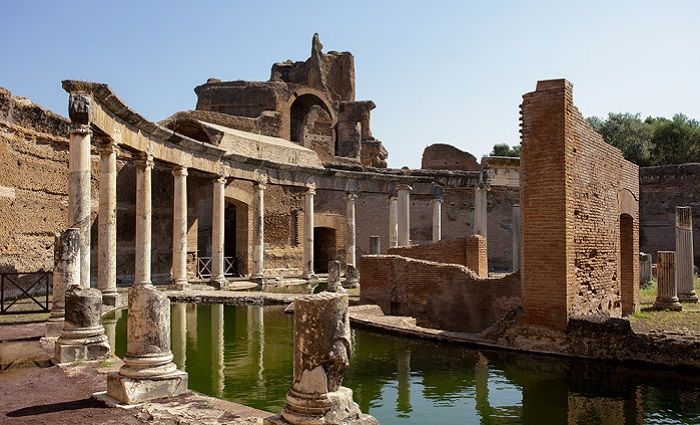
Hiking | Nature | Ruins
Tivoli was also the place chosen by Emperor Hadrian to build his luxury imperial residence outside the crowded Rome. He spent the majority of his time here when he was not traveling or in the capital of the empire.
Hadrian’s villa is located just 28 kilometers (17.4 miles) east of Rome and was discovered by Flavio Bondo in the 15th century. However, excavations began later in the 16h century by Ippolito II d’Este, an Italian cardinal and statesman who used many of the materials found to construct the famous palace Villa d’Este in Tivoli.
Since then, archaeologists have uncovered a city-like palace complex, with gardens, libraries, luxury halls, impressive baths, nymphaea and fountains, theatres, and many secrets. An interesting fact is that the whole city has underground passages and rooms that guaranteed the quick movement of slaves and workers for the palace. Benedetta Adembri notes this benefited Hadrian and his guests since they didn’t have to mingle with the help.
This well-preserved residence will help you enjoy a combination of history, archaeology, and nature if you want to disconnect for a day from the busy Rome, just as emperor Hadrian did.
5. The Treasures of the Lake of Nemi
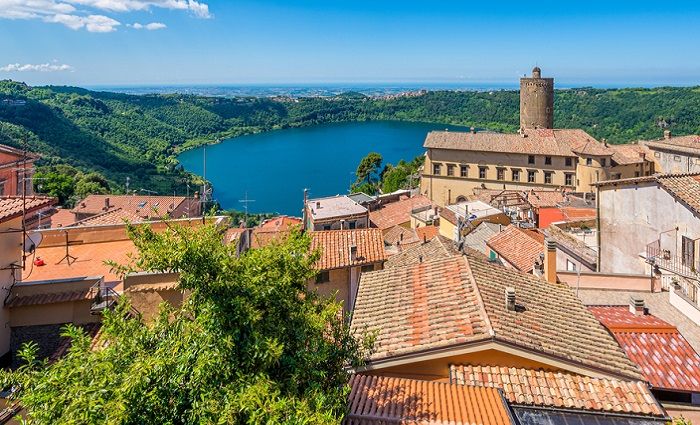
Castelli Romani | Nature | Sunken Ship
The Lake of Nemi is well known among archaeology lovers for being the place where emperor Caligula built two floating palaces. However, the history of the place goes back to the archaic period, when locals worshiped Diana, Egeria, and Virbius there.
The remains of the sanctuary we see nowadays date back to the end of the 2nd century BC. The nearly 45,000-square-meter complex had some porticos, several exedras, altars, and spaces reserved for priests. Archaeologist Filippo Coarelli believes the temple would have been located on a higher terrace. However, some scholars believe the structures found in the middle of the sanctuary were the main temple.
Nearby, remains of a Roman road are visible, as well as the shoreline of the lake and the modern Museo delle Navi Romane. The latter housed the remains of two large palace ships that sank just a short distance from the shore. Roman engineers built the ships with wood and covered them in lead and precious materials. Archaeologists believe they belonged to Caligula, according to the inscribed pipes found during excavations.
The museum you can visit near the lake housed the remains of the ships until 1944 when they were destroyed in a fire by occupying forces. Today, the museum has excellent replicas of these ships and some of the materials recovered. Alternatively, you can discover more pieces at Palazzo Massimo alle Terme in central Rome.
4. Ancient Gabii
Nature | Nature | Driving
Along Via Praenestina you can visit the remains of ancient Gabii, which was taken over by Rome at the end of the 6th century BC. The city was located between the ancient road and a dried-up lake.
During your visit, you will see part of this settlement that was destroyed due to quarrying in the area. For instance, the Temple of Juno, partially standing, still shows remains of its porticoes and a small theatre.
In 1792, archaeologists uncovered the remains of the forum and, recently, Nicola Terrenato has researched its urbanism. Curiously, from the end of the 2nd century BC onwards, the city was not densely populated.
This ancient settlement was only active through the cult of its sanctuary and the nearby villas. Early Christians also chose this place to honor S. Primitivo, a local martyr to whom they built a church.
3. Sanctuary of Fortuna Primigenia at Palestrina
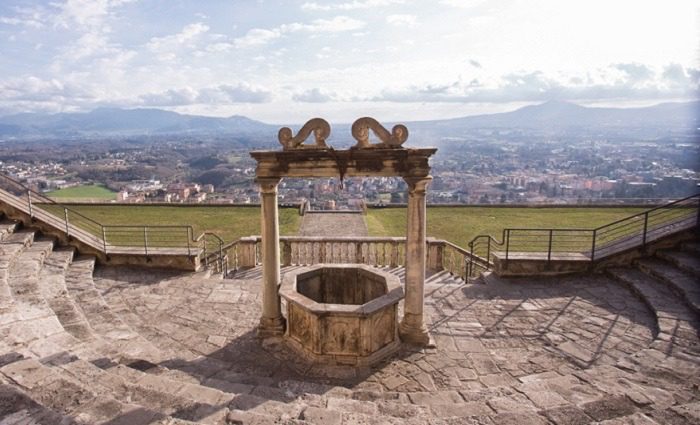
Sanctuary | Village | Day Trip
If you want to learn more about ancient religion and the importance it had for the Romans, the city of Praeneste is the place to go. This town located 45 kilometers (28 miles) east of Rome was home to the famous sanctuary of the goddess Fortuna Primigenia.
Initially, there existed two different centers of the cult that later combined in this religious sanctuary. One of them even had an oracle and pilgrims came to consult it. To highlight the importance both cults had in the region, architects built different terraces that connected through narrow passageways, ramps, and porticoes.
The result was a magnificent sanctuary, richly decorated, with an oracle, a sacred well, and a vast terrace upon which a theatre and an upper temple stood. This complex oversaw the whole valley up to the sea and is one of the best examples of Italian Hellenistic architecture.
Today, part of the sanctuary is a museum where you will learn more about the magical history of this place and other structures found in Praeneste, the city that extended around the sanctuary.
2. Nero’s Villa at Anzio
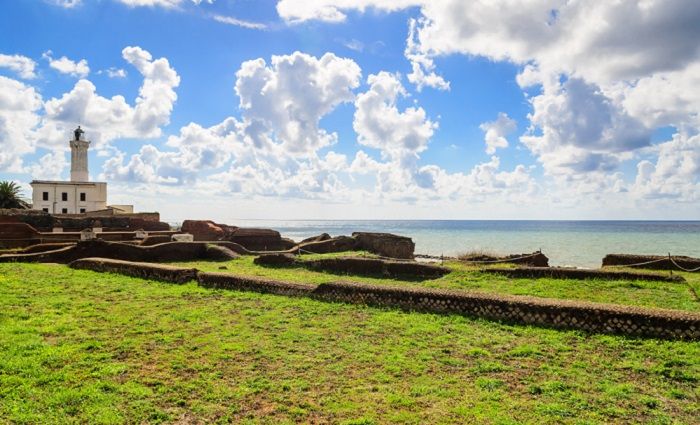
Beach | Weekend | Day Trip
Anzio, anciently called Antium, is the best option to enjoy a day trip or a weekend by the sea. Located approximately 60 kilometers (37 miles) south of Rome, this Italian town will leave you speechless. Its origins date back to the pre-Roman period, and the Romans conquered this city in 338 BC.
This city became the chosen destination for holidays and spare time by the sea for the Roman elite. Among its many remains, the so-called “Villa of Nero” stands out.
Although emperor Nero oversaw a massive redevelopment of this villa, its origin dates back to the Republican period. The Roman writer Suetonius, for instance, indicated Augustus was at Anzio in 2 BC when he learned he had been proclaimed Pater Patriae, Father of the Fatherland. Numerous emperors actually inhabited this villa, which was decorated with porticoes, statues, and majestic rooms with sea views.
Along 800 meters of the shoreline, you will enjoy the beauty of the Italian coast and the remains of the structures of this villa. Furthermore, you can learn about the history of this place in the archaeological museum after swimming on the beach!
1. The Villa of Tiberius at Sperlonga
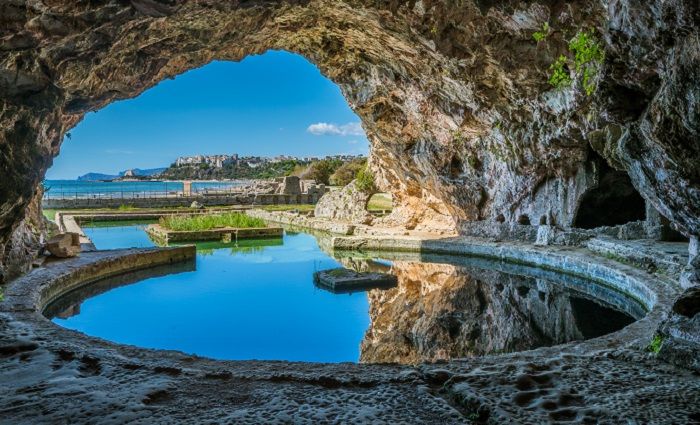
Beach | Weekend | Day Trip
One of the best options to experience a masterclass of history while enjoying the sea is at Sperlonga, located 120 kilometers (75 miles) south of Rome. There, along the beach, numerous ruins remind us of the Roman past, which was unknown until 1957.
Before that, archaeologists believed these were the remains of one of the many Roman villas found on the coasts of Italy. However, during the construction of a road in 1957, new remains were discovered. The results astonished the general public and archaeologists since they belonged to the famous villa of emperor Tiberius.
The majestic villa, with views over the sea, had different areas for the servants, a bath complex, and a luxury residence. The part that most attracts tourists is the natural cave.
Inside, the emperor perfectly combined sculptures, water, and architecture that showed scenes from the Odyssey. The date of these superb marble sculptures is still debated among scholars and you can visit them in the museum built on site.

